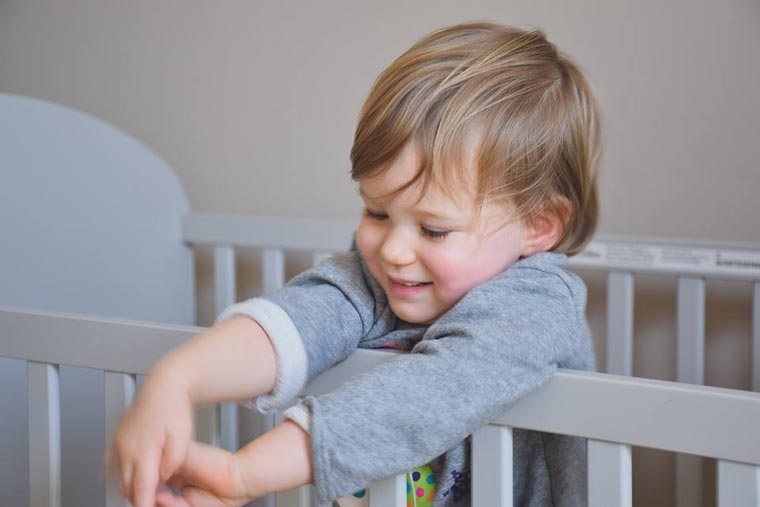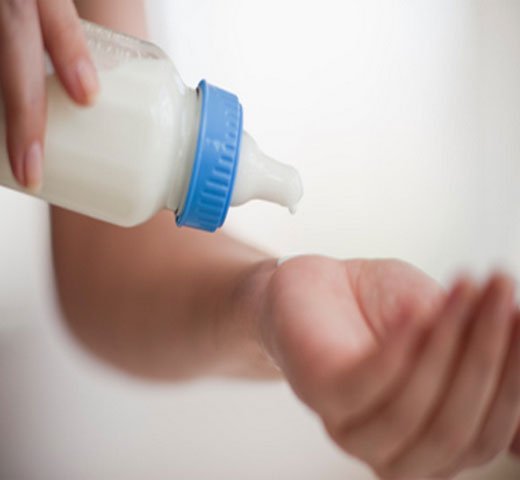To clean a bottle sterilizer, first unplug it and let it cool down. Then, remove any remaining water and wipe the interior and exterior with a damp cloth.
Cleaning a bottle sterilizer is important to maintain good hygiene and prevent any germs from spreading to your baby’s bottles. It is recommended that you clean the sterilizer at least once a week or as often as needed. Before cleaning, ensure that the sterilizer is unplugged and allowed to cool down completely.
Once cool, carefully remove any remaining water and wipe the interior and exterior of the sterilizer with a damp cloth. It is important to avoid using harsh chemicals or abrasive materials as this may damage the sterilizer. Regular cleaning will help to prolong the life of your sterilizer and ensure your baby’s feeding routine remains safe and hygienic.

Credit: www.amazon.com
Importance Of Sterilizing Baby Bottle
Babies are precious, and we want to ensure that they are always healthy and safe. That’s why sterilizing baby bottles is essential. In this blog post, we will discuss the importance of sterilizing baby bottles, what happens if bottles are not properly sterilized, and the frequency of sterilization required.
So, let’s get started!
Why Is It Important To Sterilize Baby Bottles?
Sterilizing baby bottles is crucial to keep your baby healthy. Babies are highly vulnerable to infections, and their immune systems are still developing. Sterilizing baby bottles helps eliminate bacteria and harmful germs that can cause infections such as gastroenteritis, diarrhea, and thrush.
Here are a few reasons why sterilizing baby bottles is important:
- Prevents the spread of harmful bacteria – sterilizing baby bottles helps kill all harmful bacteria and germs that can cause infections.
- Keeps baby healthy – sterilizing baby bottles keeps your baby healthy and reduces their risk of getting sick.
- Prevents cross-contamination – sterilizing baby bottles prevents cross-contamination from different types of bacteria and germs.
What Happens If Bottles Are Not Properly Sterilized?
Not properly sterilizing baby bottles can lead to several problems, such as:
- Bacterial and viral infections – when baby bottles are not properly sterilized, harmful bacteria and viruses can grow on them, which can cause infections in babies.
- Stomach upsets – improperly sterilized bottles can lead to stomach upsets, vomiting, and diarrhea, which can be dangerous for babies.
- Thrush – if baby bottles are not properly sterilized, they can lead to the growth of yeast, which can cause thrush in babies.
Frequency Of Sterilization Required
Sterilizing baby bottles is important, but it’s also necessary to know how often to do it. Here is a general guide that will help you:
- First-time use – when using a bottle for the first time, sterilize it before use.
- Daily use – sterilize bottles daily, especially during the first 12 months of a baby’s life.
- Travel – if you are traveling, sterilize bottles before and after use.
- New nipple or teat – sterilize a new nipple or teat before using it for the first time.
Sterilizing baby bottles is essential to keep your baby healthy and prevent infections. By following the guidelines mentioned above, you can ensure that your baby’s bottles are always clean and safe to use.
Choosing A Bottle Sterilizer
Advantages Of Using A Bottle Sterilizer
Are you a new parent, worried about how to keep your baby’s feeding bottles clean and sanitized? Well, the solution is simple – use a bottle sterilizer. Here are some of the advantages:
- Kills germs: Baby bottles need to be cleaned to protect against harmful bacteria that can cause illnesses. A bottle sterilizer eliminates all the germs and 99.9% of bacteria that household dishwashing may not kill.
- Chemical-free cleaning: Sterilizers use hot steam to clean bottles, eliminating the need for any chemicals that may harm your baby.
- Time saver: Cleaning baby bottles by hand can be a tedious and time-consuming process. Sterilizers clean multiple bottles at one time and, depending on the type of sterilizer, can complete the cleaning process within a few minutes.
- Peace of mind: Using a sterilizer gives new parents peace of mind knowing that their baby’s bottles have been thoroughly cleaned and are safe to use.
Different Types Of Bottle Sterilizers
There are mainly three types of bottle sterilizers:
- Electric steam sterilizer: Electric steam sterilizers use electricity to create hot steam, which kills the bacteria present in the bottle. It is the most commonly used sterilizer and can fit in multiple bottles at one time.
- Microwave sterilizer: Microwave sterilizers use steam to clean the bottles. It is a portable option and ideal for parents who travel with their baby. Microwave sterilizers can only sterilize a few bottles at one time.
- Uv sterilizer: Uv sterilizers use ultraviolet light to kill germs and bacteria. It is evolving as a popular choice among parents. However, it might not be as effective as steam sterilizers in killing all the bacteria.
Factors To Consider When Selecting A Bottle Sterilizer
Choosing the right bottle sterilizer is essential for your baby’s health. Here are some factors to consider before making the purchase:
- Type of sterilizer: Choose a sterilizer that fits your lifestyle, budget, and meets your specific needs.
- Capacity: The size of a sterilizer is an essential factor to consider if you have twins or multiples. A bigger sterilizer will fit more bottles and will save time.
- Ease of use and maintenance: Choose a sterilizer that is easy to clean and operate.
- Durability: A sterilizer that is well-built and made of high-quality materials is always a good investment.
- Brand reputation and customer reviews: Choose a brand that has a good reputation and customer reviews. It will give you an idea of other parents’ experiences, which will help you make a better decision.
Choosing the right bottle sterilizer is crucial for your baby’s health and wellbeing. Consider your specific needs, budget, and ease of use before making the purchase. By using a sterilizer, you can ensure that your baby is drinking from a clean and safe bottle every time.
Preparation For Cleaning Bottle Sterilizer
Preparing For Cleaning Bottle Sterilizer
Tools And Materials Needed For Cleaning A Bottle Sterilizer:
- Warm and soapy water
- Soft sponge or cloth
- White vinegar
- Small brush with soft bristles
- Dry towel or cloth
Safety Measures To Observe Before Cleaning A Bottle Sterilizer:
- Make sure that the sterilizer has cooled down completely before cleaning.
- Always unplug the sterilizer from the power source before cleaning.
- Keep the sterilizer away from water sources to avoid contact with electrical components.
- Avoid using abrasive or harsh cleaning materials to prevent damage to the sterilizer.
The Best Time To Clean A Bottle Sterilizer:
It is best to clean the bottle sterilizer after each use, as it ensures that the sterilizer stays clean and bacteria-free. However, if you are unable to clean it immediately, it is recommended to clean it at least once a day.
Cleaning the bottle sterilizer regularly also helps prolong its lifespan and functionality.
Keeping your bottle sterilizer clean is extremely important to ensure the safety and wellbeing of your baby. By following the safety measures and using the right tools and materials, you can easily clean your bottle sterilizer. Remember to clean your sterilizer after each use, and you’ll have a bacteria-free piece of equipment every time you need to sterilize your baby’s feeding items.
Cleaning A Bottle Sterilizer
Step By Step Guide To Cleaning A Bottle Sterilizer
Cleaning a bottle sterilizer isn’t a difficult task if you follow the right steps. Here is a step-by-step guide on how to clean your bottle sterilizer effectively:
- Turn off the sterilizer and unplug it from the outlet. Wait for a few minutes to allow it to cool down before starting the cleaning process.
- Take out all the parts of the sterilizer, including the water reservoir, tray, and shelves.
- Rinse all the detachable parts with warm, soapy water. Avoid using abrasive tools or harsh chemicals that can damage the sterilizer.
- Use a sponge or brush to scrub any stubborn residue or stains. Pay extra attention to the rim and crevices to remove any mold or dried milk deposits.
- Rinse all the parts again with clean water to remove any soap residue.
- Wipe down the sterilizer’s body with a clean, damp cloth to remove any fingerprints, dust, or stains.
- Dry all the parts thoroughly with a clean towel or let them air dry before reassembling the sterilizer.
Common Mistakes To Avoid While Cleaning A Bottle Sterilizer
When it comes to cleaning a bottle sterilizer, there are some common mistakes that many people make. Here are some mistakes you should avoid while cleaning your bottle sterilizer:
- Using bleach or other harsh chemicals that can damage the sterilizer’s components or leave a strong odor that can be harmful to your baby.
- Not cleaning the sterilizer frequently enough, allowing mold and bacteria to grow.
- Forgetting to descale the sterilizer, leading to lime buildup and eventually damaging the machine.
- Not thoroughly cleaning the entire sterilizer, including the water reservoir, trays, and shelves.
- Leaving the sterilizer wet or damp, which can attract bacteria and mildew.
How To Remove Stubborn Stains From A Bottle Sterilizer
Stubborn stains on your bottle sterilizer can be frustrating to deal with, but there are some easy solutions to remove them. Here’s how to remove stubborn stains from a bottle sterilizer:
- Mix equal parts of vinegar and water and soak a cloth in the solution.
- Use the cloth to wipe down all the parts of the sterilizer, paying extra attention to the stained areas.
- Let the solution sit for a few minutes before rinsing off all the parts with clean water.
- If the stains persist, make a paste of baking soda and water and apply it to the stained areas.
- Let the paste sit for at least 30 minutes before scrubbing off the stains with a sponge or brush.
- Rinse all the parts with clean water and dry with a towel or air dry.
By following these simple steps, you can keep your bottle sterilizer clean and safe for your baby. Remember to clean your bottle sterilizer frequently and avoid these common mistakes to ensure a smooth and hassle-free sterilization process.
Maintaining A Bottle Sterilizer
While bottle sterilizers make our lives easier by ensuring our baby’s feeding gear remains clean and bacteria-free, maintaining them is equally crucial to its lifespan and effectiveness. Here are some tips on how to maintain a bottle sterilizer to keep it functioning optimally for as long as possible.
Tips On How To Maintain A Bottle Sterilizer
- Always follow the instruction manual provided by the manufacturer.
- Always empty any leftover water from the sterilizer’s reservoir.
- Regularly clean the sterilizer’s heating element to prevent mineral buildup, which may cause damage.
- Ensure that there are no cracks or damages on the sterilizer’s heating plate.
- Descale the sterilizer as needed with vinegar or a descaling solution to maintain its efficiency.
How To Extend The Lifespan Of A Bottle Sterilizer
By ensuring that you maintain your sterilizer regularly, you can significantly extend its lifespan. Some other tips to consider include:
- Use only distilled or purified water instead of tap water, to reduce mineral buildup and prevent damage.
- Avoid overcrowding the sterilizer with too many items at once as it may cause damage to the sterilizer’s heating plate.
- Don’t use water that’s too hot or too cold, as this may damage the sterilizer’s internal components.
When To Replace A Bottle Sterilizer
Although proper maintenance of a sterilizer can extend its lifespan, nothing lasts forever. Here are some tell-tale signs that it may be time to replace your bottle sterilizer:
- The sterilizer is over three years old and has started showing signs of wear and tear.
- The sterilizer has noticeable damages or cracks.
- The heating system doesn’t seem to be working efficiently, and bottles are coming out damp instead of dry.
- The sterilizer emits a burning smell when it’s on, indicating that some components have become damaged.
By following these tips on maintaining and extending the life of your bottle sterilizer, you can ensure that your baby’s feeding gear stays hygienic and safe for use.
Frequently Asked Questions For How To Clean Bottle Sterilizer
How Often Should I Clean My Bottle Sterilizer?
It is recommended to clean your bottle sterilizer at least once a week to keep it sterile and in good working condition. However, if you use it frequently, you should clean it more often to avoid any buildup of dirt or grime.
Can I Clean My Bottle Sterilizer With Vinegar?
Yes, vinegar is a very effective and inexpensive way to clean your bottle sterilizer. Mix one part water to one part vinegar, then pour the solution into the sterilizer and let it run a cycle. Rinse it with water and leave it to dry.
Why Is There A Strange Smell Coming From My Bottle Sterilizer?
A strange smell coming from your bottle sterilizer can be caused by mold, mildew or dirt buildup. Make sure to clean your sterilizer regularly and thoroughly to avoid any unpleasant odors that could contaminate your baby’s bottles and affect their health.
Can I Clean My Bottle Sterilizer In The Dishwasher?
Not all bottle sterilizers can be cleaned in the dishwasher. Refer to the manufacturer’s instructions to see if your sterilizer is dishwasher safe. Even if it is, be sure to remove all parts first and place them in the top rack to avoid warping or melting.
Is It Safe To Use Chemical Cleaners To Clean My Bottle Sterilizer?
It is safer to use natural cleaning solutions, such as vinegar and water, to clean your bottle sterilizer. However, if you must use a chemical cleaner, make sure it is a baby-safe and non-toxic product that is suitable for cleaning baby gear.
Conclusion
Maintaining cleanliness and hygiene is a vital aspect of baby care. A bottle sterilizer is an essential tool that helps in maintaining the cleanliness and hygiene of baby bottles. The cleaning process can seem a bit overwhelming at first, but it’s crucial to do it to keep your baby safe from harmful bacteria.
Whether you’re using an electric or microwave sterilizer, it’s essential to follow the manufacturer’s instructions and maintain the device regularly. Clean your sterilizer before every use, remove limescale buildup, and descale the sterilizer once a month. Remember to use a food-grade descaler and avoid using abrasive cleaners.
With regular maintenance and cleaning, your bottle sterilizer will last longer and keep your baby bottles safe and hygienic. Make sure to follow the tips mentioned above, and your baby will thank you for it!



